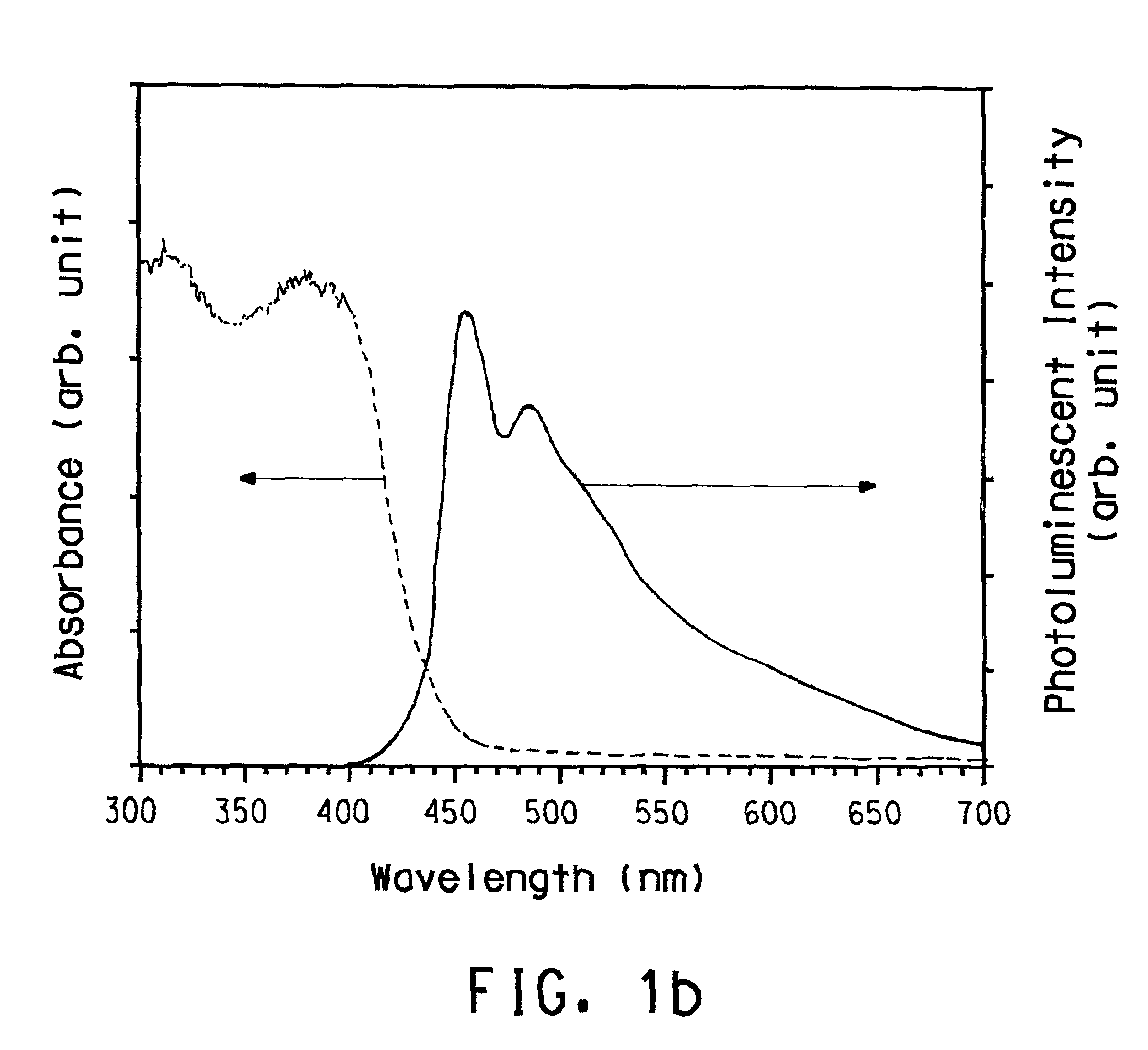Soluble poly(aryl-oxadiazole) conjugated polymers
- Summary
- Abstract
- Description
- Claims
- Application Information
AI Technical Summary
Benefits of technology
Problems solved by technology
Method used
Image
Examples
example 1
Synthesis of 9,9-di-(2-ethylhexyl)-fluorene
A solution of 40 g fluorene in 200 ml of THF was cooled down in a dry ice / acetone bath under nitrogen. n-BuLi (2.5 M in hexane, 2.1 equiv. of fluorene) was added to the solution dropwise by syringe. A yellow lithium salt of fluorene formed and was precipitated from the solution. After 1 hour of stirring, the temperature of the reaction mixture had recovered to room temperature. The reaction mixture was then placed in an ice / water bath. A solution of 104 g of 2-ethylhexyl bromide in 100 ml of THF was added dropwise to the reaction mixture over 1.5 hours. After completion of the addition, the reaction mixture was stirred at room temperature under nitrogen overnight.
The reaction mixture was poured into 600 ml of water and extracted by ethyl acetate (3×300 ml). The organic layers were combined and dried over MgSO4. Evaporation of the organic solvents afforded a crude product, which was purified by vacuum distillation. The yield of the product w...
example 2
Synthesis of 2,7-dibromo-9,9-di-(2-ethylhexyl)-fluorene
A solution of 90 g 9,9-di-(2-ethylhexyl)-fluorene in 500 ml of chloroform was cooled in an ice / water bath. 90 g of bromine was added to the solution dropwise in the dark. After the addition of bromine, the reaction mixture was stirred for 1 hour, and then it was poured into 500 ml of a saturated aqueous solution of sodium carbonate. Additional sodium carbonate was added to the mixture until the organic layer became colorless. The organic layer was then separated and the aqueous layer was extracted by chloroform two times (2×200 ml). The organic layers were combined and washed by a 5% solution of sodium hydroxide and then water, then dried over MgSO4. Evaporation of solvents afforded a crude product, which was further purified by passing over a short silica gel column using hexane as the eluent. The yield of the product was 114 g (90%).
Proton NMR verified the following structure:
1H-NMR (500 MHz, CDCl3) δ ppm: 7.51 (d, J=8.5 Hz, ...
example 3
Synthesis of 9,9-di-(2-ethylhexyl)-fluorene-2,7-dicarboxylic acid
7 g of magnesium was placed in a 500 ml flask and preheated to 100° C. under dry nitrogen. 5 mg of iodine was added, followed by the first part of a solution (20 ml) of 50 g of 2,7-dibromo-9,9-di-(2-ethylhexyl)-fluorene in 100 ml of dry THF. After the reaction was initialized (as indicated by the disappearance of color from the solution), the remainder of the solution was added dropwise with a syringe. After the addition, the reaction mixture was refluxed for 1 hour and an additional 100 ml of dry THF was added. The reaction mixture was then cooled to room temperature. 500 g of dry ice was added to the reaction mixture, and the flask was shaken until the dry ice was well mixed. After the excess amount of dry ice had evaporated, 800 ml of 18% hydrochloric acid was added to the residue. The acidified residue was extracted three times by ethyl acetate (3×200 ml). The organic layers were combined and washed with 400 ml wat...
PUM
| Property | Measurement | Unit |
|---|---|---|
| Temperature | aaaaa | aaaaa |
| Time | aaaaa | aaaaa |
| Sheet carrier density | aaaaa | aaaaa |
Abstract
Description
Claims
Application Information
 Login to View More
Login to View More - R&D
- Intellectual Property
- Life Sciences
- Materials
- Tech Scout
- Unparalleled Data Quality
- Higher Quality Content
- 60% Fewer Hallucinations
Browse by: Latest US Patents, China's latest patents, Technical Efficacy Thesaurus, Application Domain, Technology Topic, Popular Technical Reports.
© 2025 PatSnap. All rights reserved.Legal|Privacy policy|Modern Slavery Act Transparency Statement|Sitemap|About US| Contact US: help@patsnap.com



